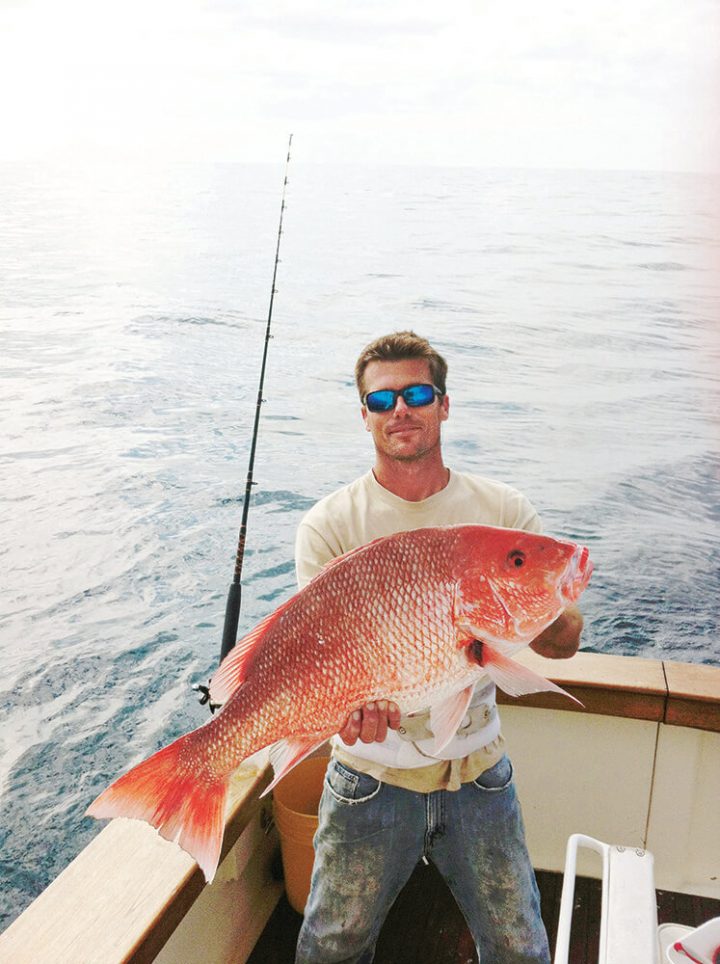
Photo courtesy of Capt. Greg Rapp
By “What Happened To Our Fish?”:
Editor’s Note: The following is an opinion piece from the “What Happened To Our Fish?” Facebook page. Although Coastal Angler Magazine doesn’t necessarily endorse or agree with the opinions expressed, the article contains information that should be of interest to all anglers.
The patience of recreational fishermen has worn thin as a result of the federal government’s mismanagement of the Gulf of Mexico’s fisheries.
Officials from the National Marine Fisheries Service testified to Congress that they spend $900 million annually and have never created even a single supportable estimate of the red snapper population in the Gulf. They tout using “scientific data” from which they develop their fisheries management plan—yet they don’t sample the reef fish populations, like red snapper, at the reef sites where they live. That’s like deer being managed from a population count in a subway station, instead of the actual places where deer actually live!
In case you are unaware, the feds manage the Gulf of Mexico’s fishery from the state boundaries, 9 miles from shore, out to 200 miles, and they have made a fiasco of it. But, rather than continuing to harp on the train wreck, let’s look at the great work being done by the fish and wildlife organizations of the five Gulf states.
While the feds tax us and spend our dollars to solely dole out catch quotas, which arbitrarily create millionaires and paupers, not a dime is spent to grow the fisheries. This is a diametrically opposite approach to what every Gulf state has done. The states leverage their funds with private sector contributions from philanthropists and organizations involved in conservation and fishing to protect and build habitats that grow fish populations. All five Gulf states have successfully solicited private support—because they are generating real and measurable results.
Many of these state investments are more than equaled by private funding, hence more projects are accomplished with fewer tax dollars spent. So, first, accolades should go out to the Gulf states for leveraging their funds with common sense collaboration and cooperation. This is a wonderful example of effectively utilizing public funds.
Now, let’s look at a few of the states’ accomplishments.
- ALABAMA – 20 years of fishery growth: In 1996, Alabama recognized the need for artificial reefs within their waters to provide fishing opportunities. Multiple sites developed into inshore fishing reefs by building onto formerly derelict oyster reefs. Alabama’s largest inshore artificial reef to date is approximately a mile in circumference. The State continues to expand this program of inshore artificial fishing reefs. Working with local conservation groups, commercial shrimp fishermen, and local municipalities; plans are to create additional inshore reefs over the next few years.
- FLORIDA – 30-plus years of fishery growth: The Florida Artificial Reef Program was created in 1982. The program was developed to understand the reef ecology to use as a component of fisheries management. The objective was to provide assistance to coastal governments, nonprofit corporations, and state universities to develop, monitor and evaluate new artificial reefs. Under the program, reefs have been constructed to:
• Enhance recreational and charter fishing and diving opportunities;
• Provide a socio‐economic benefit to coastal communities;
• Increase reef fish habitat;
• Reduce user conflicts;
• Facilitate reef related research; and,
• Do no harm to fishery resources, Essential Fish Habitat (EFH) and human health. - LOUISIANA – 30 years of fisheries growth: Louisiana’s Artificial Reef program was established in 1986 to take advantage of obsolete oil and gas platforms which were recognized as providing habitat important to many of Louisiana’s coastal fishes. Federal law required these platforms to be removed after production ceased. The removal was a loss of reef habitat. Since then, more than 70 oil and gas related companies have donated the jackets of oil and gas structures. In addition, these companies donate half of their realized savings over a traditional onshore removal into Louisiana’s Artificial Reef Trust Fund – a collaborative win-win.
- MISSISSIPPI– 45 years of fisheries growth: In 1972 Mississippi began to construct artificial reefs. World War II Liberty Ships were made available for the creation of reefs in Mississippi’s coastal environments. In 1999 the state’s artificial reef plan was implemented to guide artificial reef development in both state and adjacent federal waters.
- TEXAS – 50 years of fisheries growth: After years of experimentation, the first successful reef development occurred during the mid-1970s. Twelve obsolete World War II Liberty ships were sunk at five different sites. These sites are still productive and are being enhanced with additional durable and stabilizing materials.
Texas oil rigs have long acted as unintentional reefs, creating thousands of square miles of marine habitat as species attach themselves to rigs below the waterline. The Texas Artificial Reef Program takes advantage of partnering with conservation organizations, corporations, communities, and sportsmen to create and maintain more than 4,000 acres of artificial reef structures within Texas Gulf Waters.
The frequently shallow waters within the 9-mile state limits address only a small fraction of the Gulf’s fish population. Imagine the good that could be done with the states managing the remaining 95 percent of the waters out to the 200-mile limit.
With the states’ decades of experience, the ability to collaborate, and the ability to raise their own funds, why would the federal government not agree to transfer fishery management to the five Gulf states? Our fishery in the Gulf of Mexico and our children, deserve the termination to the unproductive federal fisheries management. Authority should be transferred to the highly experienced, successful and significantly more efficient management by the five gulf states.
Speak Out! Locate your congressman at www.house.gov/representatives/find and type in your zip code. Click your Representative’s website for the phone number. Follow the “What Happened To Our Fish?” Facebook page or contact the organization at RecreationalFishermen@gmail.com.